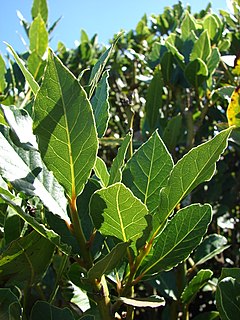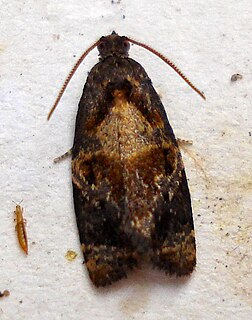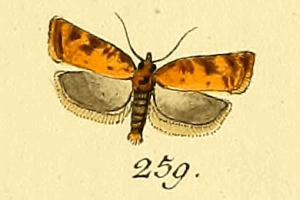
The bay leaf is an aromatic leaf commonly used in cooking. It can be used whole or in a dried or ground form.

Galls or cecidia are a kind of swelling growth on the external tissues of plants, fungi, or animals. Plant galls are abnormal outgrowths of plant tissues, similar to benign tumors or warts in animals. They can be caused by various parasites, from viruses, fungi and bacteria, to other plants, insects and mites. Plant galls are often highly organized structures so that the cause of the gall can often be determined without the actual agent being identified. This applies particularly to some insect and mite plant galls. The study of plant galls is known as cecidology.

Filipendula ulmaria, commonly known as meadowsweet or mead wort, is a perennial herb in the family Rosaceae that grows in damp meadows. It is native throughout most of Europe and Western Asia. It has been introduced and naturalised in North America.

Laurus nobilis is an aromatic evergreen tree or large shrub with green, glabrous smooth leaves, in the flowering plant family Lauraceae. It is native to the Mediterranean region and is used as bay leaf for seasoning in cooking. Its common names include bay tree, bay laurel, sweet bay, true laurel, Grecian laurel, or simply laurel. Laurus nobilis figures prominently in classical Greco-Roman culture.

Alnus glutinosa, the common alder, black alder, European alder, European black alder, or just alder, is a species of tree in the family Betulaceae, native to most of Europe, southwest Asia and northern Africa. It thrives in wet locations where its association with the bacterium Frankia alni enables it to grow in poor quality soils. It is a medium sized, short-lived tree growing to a height of up to 30 metres (100 ft). It has short-stalked rounded leaves and separate male and female flowers in the form of catkins. The small, rounded fruits are cone-like and the seeds are dispersed by wind and water.

Prunus laurocerasus, also known as cherry laurel, common laurel and sometimes English laurel in North America, is an evergreen species of cherry (Prunus), native to regions bordering the Black Sea in southwestern Asia and southeastern Europe, from Albania and Bulgaria east through Turkey to the Caucasus Mountains and northern Iran.

Salix caprea, known as goat willow, pussy willow or great sallow, is a common species of willow native to Europe and western and central Asia.

Alucita hexadactyla is a "micromoth" of the many-plumed moth family (Alucitidae). It is found in Europe and has been introduced into North America.

Ditula angustiorana, the red-barred tortrix, is a moth of the family Tortricidae found in Africa, Asia, Europe and North Africa. Other common names are the fruit-tree tortrix and the vine tortrix. The moth was first described by Adrian Hardy Haworth in 1811.
The African citrus psyllid is a sap-sucking insect, a hemipteran bug in the family Triozidae. It is an important pest of citrus, being one of only two known vectors of the serious citrus disease, huanglongbing or citrus greening disease. It is widely distributed in Africa. The other vector is the Asian citrus psyllid, Diaphorina citri.

Psylla is a genus of sap-sucking insects belonging to the order Hemiptera. There are at least 110 described species in Psylla. Species within the genus feed on various host plants.

Laurus novocanariensis is a large shrub or tree with aromatic, shiny dark-green foliage. belonging to the evergreen tree genus Laurus of the laurel family, Lauraceae. The genus includes three species, whose diagnostic key characters often overlap. Under favorable conditions it is an impressive tree of 3 to 20 m. tall. It is native of rich soils in the cloud zone of always moist spots in subtropical climate with a high air-humidity, on the Canary and Madeira islands.

Phyllocoptes eupadi is a mite that chemically induces a pouch gall to develop as a sub-spherical distortion rising up from the upper surface of the lamina of leaves of blackthorn shrubs Prunus spinosa and other Prunus spp. Synonyms are Eriophyes padi (Nalepa) and Phytoptus padi prunianus.

Acleris aspersana, the ginger button, is a species of moth of the family Tortricidae. It is found in Europe, where it has been recorded from Ireland, Great Britain, France, the Benelux, Germany, Denmark, Austria, Switzerland, Italy, the Czech Republic, Slovakia, Slovenia, Croatia, Hungary, Bulgaria, Romania, Poland, Norway, Sweden, Finland, the Baltic region and Russia. It is also found in the Near East and the eastern Palearctic realm. The habitat consists of meadows and forest edges.

Trioza centranthi is a sap-sucking hemipteran bug in the family Triozidae which creates galls on the leaves and flowers of Centranthus and Valerianella species. It was first described by Jean Nicolas Vallot, a French entomologist in 1829 and is found in Europe.
Andricus corruptrix is a species of gall-forming wasp, in the genus Andricus. It is found in Europe.
Trioza eugeniae or the syzygium leaf psyllid, lillypilly psyllid, and eugenia psyllid is a sap-sucking hemipteran bug in the family Triozidae which creates galls on the leaves of Syzygium paniculatum. This species is native to Australia and has been introduced into California.

Eriophyes inangulis is a gall mite which makes small, pimple-like galls on the leaves of alder. The mite was first described by the Austrian zoologist, Alfred Nalepa in 1889 and is found in Europe and North America.

Taphrina tosquinetii is a fungal plant pathogen that causes large blisters on both surfaces of the leaves of alder.
Phyllocoptes malinus, also known as the apple leaf mite, is a species of mite belonging to the genus Phyllocoptes. It causes a gall, which is a swelling on the external tissues, on the leaves of apples. The mite is found in Europe and was first described by the Austrian zoologist Alfred Nalepa in 1892.
















